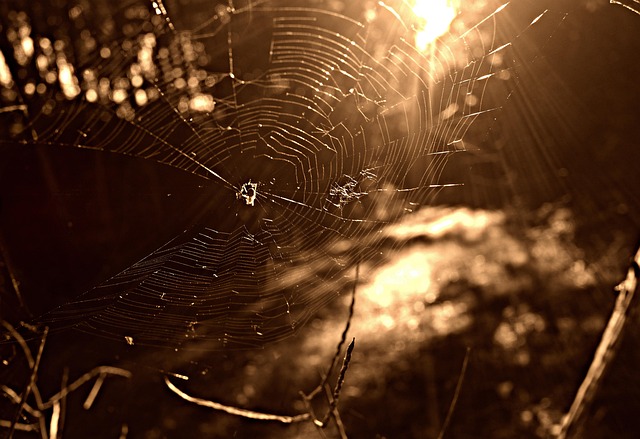Spider infestations can be prevented and controlled through identifying entry points like doorframes and wall cracks, sealing gaps with caulk or weatherstripping, regular cleaning, and proper ventilation. Using high-quality sealants like silicone-based options creates robust protection. While DIY methods offer temporary solutions, professional spider infestation solutions using specialized equipment and tailored advice provide lasting results, especially for severe cases and hard-to-reach areas.
Tired of sharing your space with unwanted arachnids? Understanding where spiders enter is key to effective spider infestation solutions. From cracks and crevices to uns sealed doors and windows, these eight-legged invaders find numerous routes into your home. This article delves into the science behind spider behavior, explores the power of sealing as a primary defense, guides you through choosing the best sealants, and helps you decide when to turn to professional spider control experts for long-lasting protection.
Understanding Spider Infestations: Common Entry Points and Behaviors
Understanding Spider Infestations: Common Entry Points and Behaviors
Spider infestations can be a significant concern for homeowners, as these arachnids often find their way into buildings through various entry points. Identifying common areas where spiders tend to enter is crucial in implementing effective spider infestation solutions. Doorframes, windowsills, and cracks in walls are typical routes used by spiders to access indoor spaces. They are attracted to dark, narrow spaces and areas with high humidity, making attics, crawl spaces, and basements particular hotspots for infestations.
Spider behaviors also play a role in their infiltration. Many species spin intricate webs as a means of catching prey and navigating the environment. These webs can serve as entry points themselves, particularly when attached to exterior structures. Understanding these habits helps in sealing potential entryways more efficiently. Regular inspections and proactive sealing measures are key to deterring spiders and maintaining a spider-free home.
The Role of Sealing in Spider Control: Effective Strategies
Sealing entry points is a crucial component in controlling and preventing spider infestations, offering long-lasting spider infestation solutions. It’s a strategy that focuses on eliminating potential hiding places and blocking access to structures, thus disrupting their living environment. By meticulously examining your home or building, you can identify common entryways such as gaps around pipes, wires, doors, and windows. Sealing these areas with appropriate materials like caulk, weatherstripping, or foam insulation creates a physical barrier, making it difficult for spiders to enter.
Implementing effective sealing strategies requires attention to detail and the use of suitable products. Ensuring that all cracks and crevices are filled helps create a spider-free environment. Regular maintenance is key; re-seal as needed after seasonal changes, as spiders are known to take advantage of expanding and contracting materials. Combining sealing with other methods like regular cleaning, pest control treatments, and proper ventilation will significantly reduce spider activity, providing a more comfortable living space.
Choosing the Right Sealants for Long-Lasting Protection
When it comes to tackling spider infestations, one of the most effective strategies is to employ the right sealants for entry points. These products are crucial in creating a barrier that prevents spiders from finding their way into your home or building. The key lies in selecting long-lasting sealants designed specifically for this purpose. Waterproof and durable options ensure they can withstand various weather conditions, maintaining their effectiveness over time.
Choosing the right sealant means considering factors like flexibility, adhesion, and resistance to UV rays. Silicone-based sealants are popular choices due to their excellent water resistance and ability to create a tight seal around complex shapes. This ensures that no crevice is left unguarded, making it a robust spider infestation solution. By sealing entry points strategically, you significantly reduce the risk of spiders establishing a presence in your space.
DIY vs Professional Sealing: When to Seek Expert Help
Many homeowners attempt DIY sealing methods as a spider infestation solution, but professional help is often necessary for effective and long-lasting results. While do-it-yourself (DIY) sealing can be a good starting point, spiders are adept at finding new entry points, especially in complex structures. Professional exterminators have the expertise to identify all potential access points and seal them thoroughly, ensuring no new spiders can enter.
Hiring professionals is particularly crucial when dealing with severe spider infestations or hard-to-reach areas. Experts use specialized equipment and treatments that are not readily available to homeowners, making their services more effective for complete spider control. They also provide valuable insights into preventing future infestations by offering tailored advice specific to your home’s structure and environment.
When it comes to spider infestation solutions, expert sealing of entry points is a highly effective strategy. By understanding common entry points and behaviors, you can choose the right sealants for lasting protection. Whether tackling the problem DIY or seeking professional help, sealing plays a crucial role in mitigating spider infestations. Implement these strategies to create a spider-free environment and maintain a peaceful home.
